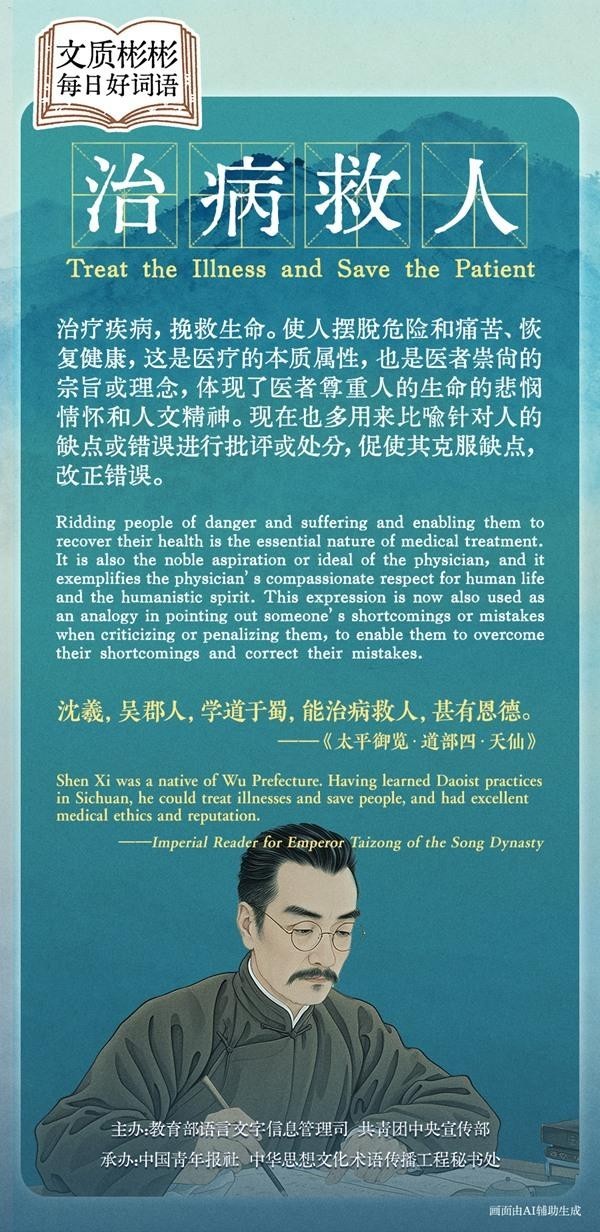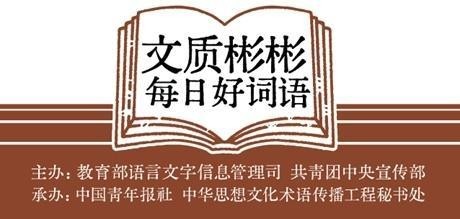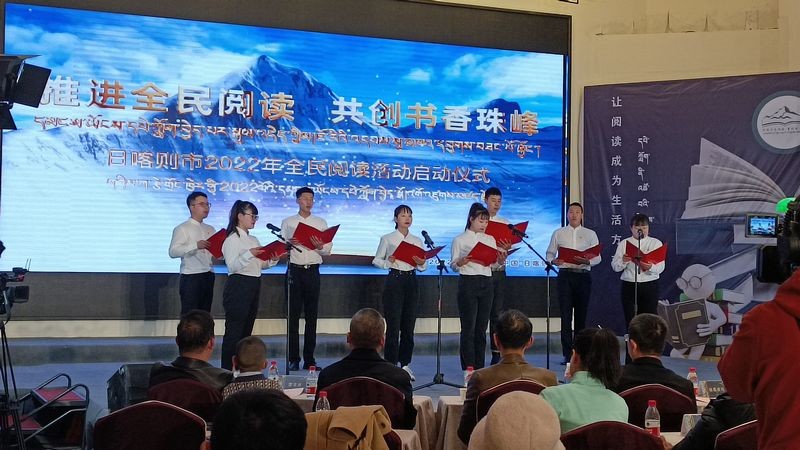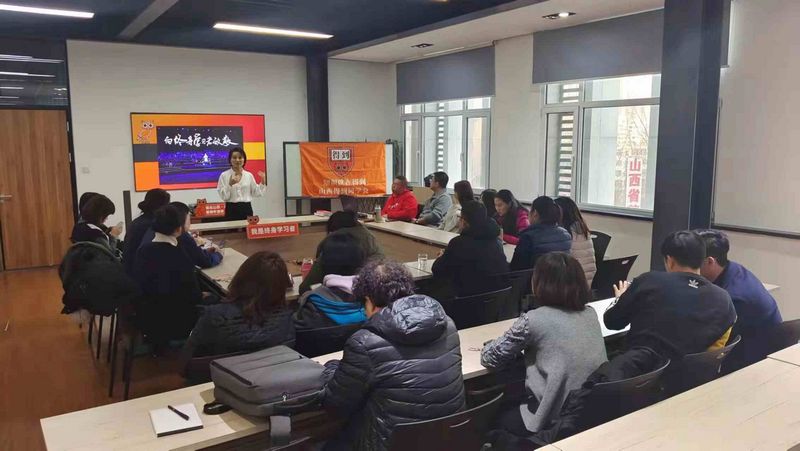
整理/秦珍子 制图/董怡璇
治疗疾病,挽救生命。使人摆脱危险和痛苦、恢复健康,这是医疗的本质属性,也是医者崇尚的宗旨或理念,体现了医者尊重人的生命的悲悯情怀和人文精神。现在也多用来比喻针对人的缺点或错误进行批评或处分,促使其克服缺点,改正错误。批评或处分只是手段,而且对事不对人,目的是要把有缺点或错误的人拉回正确的轨道上来。这体现了在对待他人缺点、错误方面,坚持原则与宽以待人精神的有机统一,与“爱人以德”不无渊源。
Treat the Illness and Save the Patient
Ridding people of danger and suffering and enabling them to recover their health is the essential nature of medical treatment. It is also the noble aspiration or ideal of the physician, and it exemplifies the physician's compassionate respect for human life and the humanistic spirit. This expression is now also used as an analogy in pointing out someone's shortcomings or mistakes when criticizing or penalizing them, to enable them to overcome their shortcomings and correct their mistakes. Criticisms or penalties are merely measures taken to help someone; they target the behavior and not the person, and the goal is to bring someone with shortcomings or mistakes back onto the right path. This demonstrates the organic unity of firmly adhering to principles while showing leniency towards the person, and it is related to the concept "loving the people in accordance with rules of moral conduct".
引例
沈羲,吴郡人,学道于蜀,能治病救人,甚有恩德。(《太平御览·道部四·天仙》)(沈羲,吴郡人,在蜀地学得道术,能治病救人,医德和口碑都非常好。)
Shen Xi was a native of Wu Prefecture. Having learned Daoist practices in Sichuan, he could treat illnesses and save people, and had excellent medical ethics and reputation. (Imperial Reader for Emperor Taizong of the Song Dynasty)

来源:中国青年报
2025年10月19日 01版
华夏大医国学网免责声明
- 1、本网发布的原创内容版权均属本网及资料提供者所有。所有媒体在引用、复制、转载、摘编时需明显标注来源于中华国医传媒网或华夏大医国学网。
- 2、本网转载的文章本网发布的诊治疾病的文章供参考,文章内容如涉及药方和治疗方法,请在医师指导下使用。
- 3、本网发布的诊治疾病的文章供参考,不能据此自行确诊和进行医疗。
- 4、本网转载的文章,在原平台未声明禁止转载的情况下进行转载。只是出于传播更多信息的目的,并不代表赞同其观点或证实其内容,亦不构成任何建议。图文视频等版权归原作者(平台)所有,如有异议请发邮件至 office@dygxw.org.cn 联系删除。
 会员投稿
会员投稿 手机版
手机版 | 文学频道
| 文学频道




